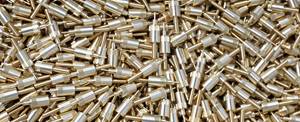Digital Thread Boosts Data-Driven Manufacturing
The National Institute of Standards and Technology (NIST) is initiating a project to demonstrate how a standardized 3D model of a product can integrate and streamline production from initial design through final inspection in a continuous, coherent data-driven process.
Share





Data embedded in a 3D model will serve as a “digital thread” that unifies and integrates all manufacturing steps to save time and cut costs.
The National Institute of Standards and Technology (NIST) is initiating a project to demonstrate how a standardized 3D model of a product can integrate and streamline production from initial design through final inspection in a continuous, coherent data-driven process. With this project, NIST researchers and their industrial partners intended to develop what they see as a new dimension to manufacturing capabilities.
The project will demonstrate the feasibility—and benchmark the advantages—of using standardized, 3D models for electronically exchanging and processing product and manufacturing information all the way from design through inspection of the final part. This tightly integrated, seamless string of activities is what manufacturers are calling a “digital thread.” The project is aptly named the Design to Manufacturing and Inspection Project.
This approach contrasts with the common practice of converting 2D computer-aided design (CAD) drawings into static documents. The 3D models will be embedded with data and instructions that computers can interpret and apply to key manufacturing functions. According to NIST, this development will open the way to significant operational and bottom-line benefits. These include reduced cycle time and cost, less duplication of effort, lower risk of errors, increased part yields and higher-quality products.
Collaborators in the NIST-led project include International TechneGroup Incorporated (ITI), Milford, Ohio, and Advanced Collaboration Consulting Resources, Summerville, South Carolina, who are interoperability-focused manufacturing-services providers. Also participating are Rockwell Collins, an Iowa-based manufacturer of avionics and communication equipment for defense and commercial uses; and Geater Machining and Manufacturing, an aerospace supplier located in Independence, Iowa. Other participants are CNC Software, a Tolland, Connecticut, maker of computer-aided manufacturing (CAM) software; Mitutoyo America, a maker of measurement equipment and software; and software vendor CoreTechnologie, Rossford, Ohio.
The apparent catalyst for integrating this project is a new international standard for incorporating computer-readable product and manufacturing information (PMI) into 3D models. These models do not require human interpretation of graphical depictions followed by manual data reentry. Recently published by the international Organization for Standardization, ISO 10303-242 (also known as STEP AP 242) enables designers and process and systems engineers to embed 3D representations of parts with actionable specifications for materials, geometrical and dimensional tolerances, and surface texture, as well as process notes, finish requirements and other information
In the new project, Rockwell Collins will use its CAD system to generate a 3D design of a part, complete with all feature tolerances and other specifications. The design will be translated into STEP AP 242 so that Geater Machine and Manufacturing can repurpose the model into the language understood by the software it uses to generate machining instructions. Independently, Geater will reuse the STEP AP 242 model in software to generate code that will direct a coordinate measuring machine (CMM) to determine whether the part is manufactured as designed. The intent is to perform this step with no manual data entry. The project calls for researchers to verify and validate translations involved in the data exchanges at each stage in this thread.
The project will promote the implementation of data-driven manufacturing. “The various systems involved need to be autonomous, self-aware and self-correcting,” says NIST systems analyst Allison Barnard Feeney, leader of the project. “At the same time, they must be able to work harmoniously with human supervision and collaboration."
A full-scale demonstration of end-to-end interoperability is expected by summer 2015.
Related Content
Swiss-Type Control Uses CNC Data to Improve Efficiency
Advanced controls for Swiss-type CNC lathes uses machine data to prevent tool collisions, saving setup time and scrap costs.
Read MoreHow this Job Shop Grew Capacity Without Expanding Footprint
This shop relies on digital solutions to grow their manufacturing business. With this approach, W.A. Pfeiffer has achieved seamless end-to-end connectivity, shorter lead times and increased throughput.
Read MoreProtecting Your Automation Investments
Shops need to look at their people, processes and technology to get the most of out their automation systems.
Read MoreReinventing a Precision Shop With a Data-Driven Mindset
When this machine shop lost 90% of its business within three months, a reinvention was in order. Here's how it survived after quickly falling on hard times.
Read MoreRead Next
5 Rules of Thumb for Buying CNC Machine Tools
Use these tips to carefully plan your machine tool purchases and to avoid regretting your decision later.
Read MoreRegistration Now Open for the Precision Machining Technology Show (PMTS) 2025
The precision machining industry’s premier event returns to Cleveland, OH, April 1-3.
Read MoreSetting Up the Building Blocks for a Digital Factory
Woodward Inc. spent over a year developing an API to connect machines to its digital factory. Caron Engineering’s MiConnect has cut most of this process while also granting the shop greater access to machine information.
Read More































